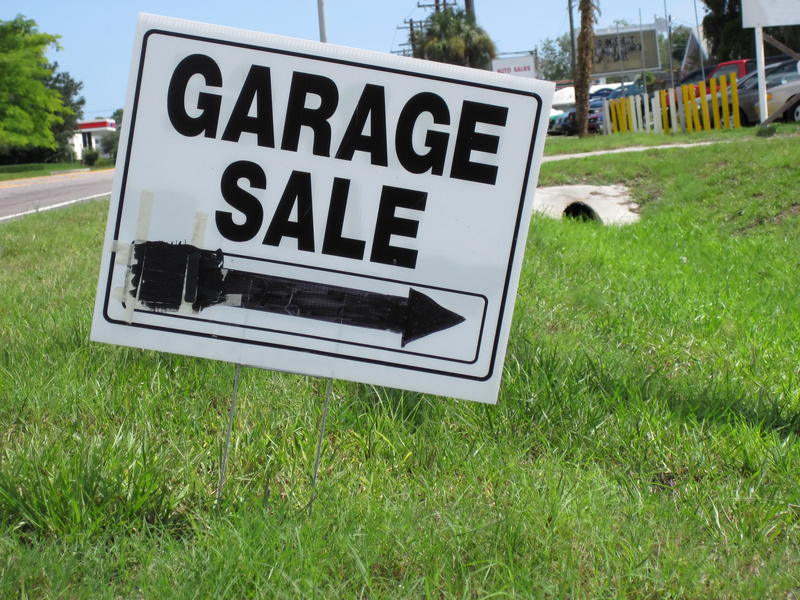Embrace Sustainable Living by Cutting Plastic Consumption
As environmental concerns continue to rise, more individuals and communities are making a conscious effort to reduce their plastic usage. The journey towards sustainability begins with simple changes at home and extends to global action. This comprehensive guide will explore the urgency of cutting plastic consumption, offer actionable tips, and highlight the positive impact sustainable living can have on our planet.

Why is Reducing Plastic Use Essential for Sustainability?
Plastics have revolutionized modern life, being present in almost every product we use. However, their long-term consequences for the environment and human health are alarming. Understanding the problems associated with single-use plastics is the first step towards embracing a lifestyle built on sustainability.
The Environmental Impact of Plastic Waste
- Non-Biodegradable: Most plastics take hundreds to thousands of years to decompose. This leads to the accumulation of plastic waste in landfills and natural habitats.
- Ocean Pollution: Approximately 8 million tons of plastic end up in the world's oceans each year, threatening marine life and entering the food chain.
- Microplastics: As plastics break down, they form microplastics, which are ingested by animals and humans, posing serious health risks.
- Greenhouse Gas Emissions: The production and incineration of plastics contribute to greenhouse gas emissions, exacerbating climate change.
Cutting down on plastic consumption not only curtails pollution but also supports healthier communities and a more sustainable planet.
Benefits of Embracing a Plastic-Free Lifestyle
Reducing plastic waste goes beyond environmental protection; it promotes economic and personal well-being too. Here are some key benefits:
- Healthier Living: Limiting exposure to plastic materials and microplastics can lead to lower risks of hormone disruption and other health concerns.
- Cleaner Environment: Pristine parks, beaches, and cities are possible when we minimize plastic litter.
- Conservation of Resources: Using alternatives to plastic helps preserve petroleum resources and reduces energy usage.
- Cost Savings: Reusable items may have a higher upfront cost but save money in the long run by eliminating the need for single-use products.
- Positive Community Impact: Setting a sustainable example inspires friends and neighbors to adopt waste-cutting habits, amplifying the benefits.
Practical Ways to Reduce Plastic Usage in Daily Life
Transitioning to a sustainable lifestyle may feel overwhelming at first, but small steps can make a big difference. Here are proven strategies to help you cut down on plastic consumption every day.
1. Choose Reusable Alternatives
- Always carry a reusable water bottle and coffee cup.
- Opt for glass or stainless-steel food storage containers instead of plastic.
- Use cloth grocery bags and produce sacks instead of plastic bags.
- Say no to disposable straws; use bamboo, metal, or silicone alternatives.
2. Shop Smart and Package-Free
- Visit local farmers markets or bulk stores that encourage reusable containers.
- Choose products packaged in glass, cardboard, or metal when possible.
- Buy fresh produce without plastic wraps or trays.
- Avoid unnecessary plastic-wrapped goods.
3. Rethink Personal Care and Household Products
- Switch to bar soaps and shampoo bars instead of bottled liquids.
- Try refillable cleaning products and avoid single-use wipes.
- Use natural loofahs or biodegradable scrubbers.
- Explore DIY cleaning solutions using vinegar and baking soda.
4. Support Brands and Initiatives Focused on Sustainability
- Choose companies with eco-friendly packaging and ethical production methods.
- Look for the "plastic-free," "biodegradable," or "compostable" labels.
- Participate in take-back or recycling programs offered by brands.
5. Engage in Community Efforts
- Volunteer for local clean-ups and recycling projects.
- Advocate for plastic bans or reduction policies in your community.
- Educate others by sharing tips and success stories.
Hidden Sources of Plastic: What to Watch Out For
Some plastics are obvious, but many lurk in unexpected places. Here are hidden sources of plastic to keep an eye on:
- Tea Bags: Many tea bags contain plastic fibers; opt for loose-leaf tea or brands with plastic-free bags.
- Chewing Gum: Most gum bases are made from synthetic rubber (plastic); try natural alternatives.
- Wet Wipes: These often contain plastic fibers. Use washable cloths when possible.
- Receipts: Thermal paper can contain BPA, a plastic-based chemical.
- Glitter and Microbeads: Found in cosmetics and crafts, these are dangerous to waterways; choose products without them.
By becoming aware of these less obvious forms of plastic, you can further cut your overall plastic footprint.
How to Embrace Sustainable Living at Home
Our homes are central to shaping our daily habits. Making eco-friendly improvements can drastically reduce your household's plastic waste and inspire others to do the same.
Kitchen
- Store food in glass jars or stainless steel containers.
- Invest in beeswax wraps or silicone lids for covering food.
- Compost food scraps instead of using plastic trash bags.
Bathroom
- Choose bamboo toothbrushes and natural toothpaste tablets.
- Use refillable or bulk toiletries and shampoos.
- Switch to cotton swabs with paper stems.
Laundry Room
- Use laundry powder in cardboard boxes instead of liquid detergents in plastic bottles.
- Use wool dryer balls instead of single-use dryer sheets.
On-the-Go Tips
- Pack lunches in metal or glass containers and avoid plastic utensils.
- Bring your own container for take-out food.
- Say no to plastic bags, bottles, and straws when eating out.
Teaching Children the Value of Plastic-Free Living
Educating children about sustainable living sets the foundation for a lifetime of environmental stewardship. Here are ways to involve the younger generation:
- Make eco-friendly swaps together, such as using lunchboxes and refillable bottles.
- Host craft projects using recycled materials instead of new plastics.
- Read books and watch documentaries about ocean conservation and wildlife.
- Encourage participation in clean-up days and recycling efforts.
Children are quick learners, and their enthusiasm can influence others to adopt greener habits.
Innovative Solutions and Alternatives to Plastic
The marketplace is responding to environmental awareness by providing an increasing number of plastic-free alternatives. Here are some exciting innovations:
- Edible Packaging: Some snack wrappers are now made from seaweed or rice starch.
- Plant-Based Plastics: Bioplastics derived from corn, sugarcane, or potatoes offer compostable options.
- Reusable Beeswax Wraps: Replace cling film and zip-top bags in food storage.
- Natural Fiber Textiles: Use clothing and tote bags made of organic cotton, linen, or hemp.
Choosing these alternatives supports the market demand for eco-friendly options and encourages continued innovation in sustainable materials.
Challenges in Cutting Plastic Consumption: How to Overcome Them
Transitioning to a low waste lifestyle comes with obstacles, but with determination and creativity, they can be overcome.
- Inconvenience: Initially, seeking out sustainable options may take more effort, but it becomes second nature with practice.
- Costs: While some sustainable products have higher upfront prices, they are often more durable and cost-effective over time.
- Lack of Access: Not all communities have bulk stores or plastic-free options. Focus on making the best choices available to you and support local businesses in expanding their eco-friendly offerings.
- Social Influence: Spread awareness and encourage others without judgment, creating a positive community around sustainability.
What Governments and Organizations Are Doing to Tackle Plastic Pollution
While individual efforts are vital, government policies and global partnerships accelerate the move towards a more sustainable future.
Global Bans and Regulations
- Many countries and cities have implemented bans on single-use plastic bags, straws, and polystyrene containers.
- Extended producer responsibility (EPR) policies require manufacturers to handle the lifecycle of their products, promoting less plastic packaging.
- International agreements aim to limit plastic leakage into the ocean and ensure responsible waste management.
Corporate Responsibility
- Companies are adopting plastic-free packaging and supporting recycling programs.
- Businesses encourage customers to bring reusable containers through discounts and loyalty programs.
- Brands are investing in sustainable material research and development.
Community and Grassroots Initiatives
- Non-profits and advocacy groups run educational campaigns and organize clean-up drives.
- Zero-waste shops and swap markets offer plastic-free alternatives at the local level.
- Crowdsourcing and social media movements share tips and amplify consumer voices for change.
Simple Swaps for a Greener Tomorrow
- Switch plastic bags with cloth totes.
- Use a refillable water bottle instead of buying bottled water.
- Choose bar soap and shampoo bars over bottled versions.
- Opt for reusable coffee cups and stainless-steel straws.
- Store leftovers in glass or silicone containers.
- Purchase produce without plastic packaging, shopping at farmer's markets.
- Buy bulk goods in your own containers to avoid single-use packaging.

Embracing a Mindset of Sustainable Living
The move towards sustainability is about more than products--it's about embracing a plastic-free mindset. Mindfulness, resourcefulness, and community action are key.
- Create new habits: Set reminders for yourself to bring reusable bags and containers.
- Plan ahead: Prepare snacks and meals in advance to avoid buying packaged foods on the go.
- Share knowledge: Discuss your journey with friends, family, and peers to inspire collective action.
- Celebrate progress: Every avoided item of single-use plastic is a step in the right direction.
Remember, sustainability doesn't require perfection--it thrives on persistence, creativity, and community spirit.
Conclusion: Every Effort Counts Towards a Plastic-Free Future
Embracing sustainable living by cutting plastic consumption is not just a trend but a necessary movement for our planet's well-being. By making informed choices, advocating for systemic change, and supporting innovations, each of us can be a powerful force for positive environmental impact. Start today--swap single-use plastics for lasting alternatives, and inspire others to join the journey towards a cleaner, healthier, and more sustainable world.
Together, even the smallest actions can build a future where plastic pollution is a problem of the past.